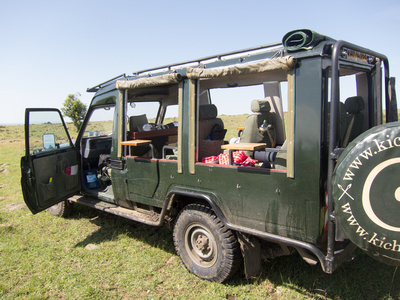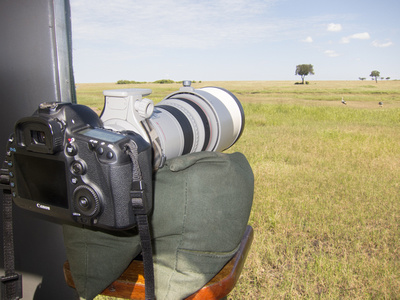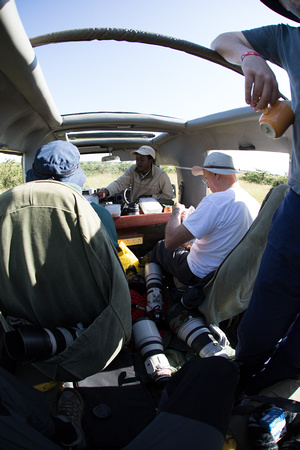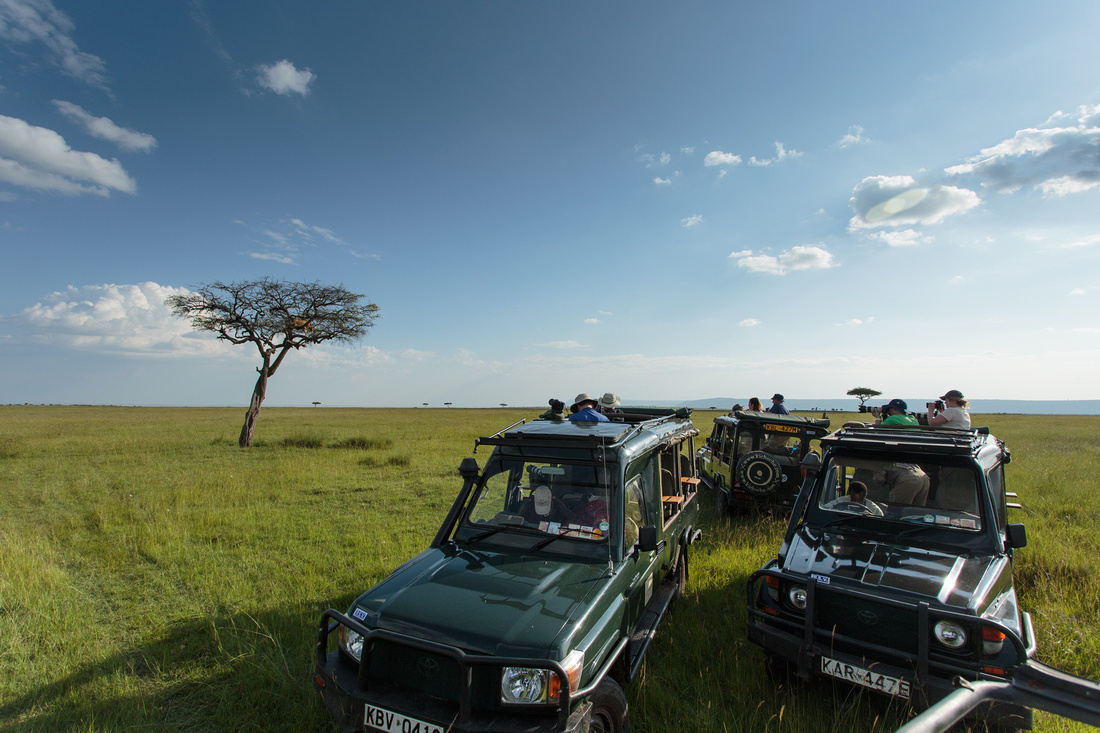Back to the Mara - Part 3
As a slight aside from my recent posts about my trip to Kenya this year, I thought I'd use this blog entry to talk less about the experiences and the pictures that resulted, and instead a bit about practical stuff. Hopefully at least some of this info might be of use to anyone planning a trip.
Kit, and transport of kit
So, first of all, you've got to get there. It won't come as a surprise to any photographer that camera kit is heavy. Wildlife photography kit especially so. A 300 or 500mm prime lens can easily weigh 4 or 5 kilos and when your carry-on limit is usually around 10-12 kilos then you're quickly hitting your limit. So you're going to want to pack clever.
My camera bag of choice, when I'm needing to haul a lot of kit and want to take it on a plane, is my Tilopa, from US company F-Stop. F-Stop bags are essentially conventional rucksacks on the outside, with an internal frame and padded container for your fragile bodies and lenses. It has the advantage of not shouting that it's a camera bag, so with a bit of luck you're less likely to be asked to weigh it at checkin (hopefully...)
Nonetheless, I do try to pack non-essential kit in my hold luggage, to try and manage the weight.
On this trip, I flew from Heathrow to Nairobi with Keyna Airways. When we went out, hand luggage allowance was 12Kg, so you'll need to employ some tactics. All I'd say, is that if you have pockets, consider using them...
I was a bit more concerned about our internal flight. We'd been told that it was 15Kg maximum for all luggage. However, when we got to Wilson airport in downtown Nairobi, all our luggage from our group was put onto one massive scale, as they were only concerned about the total, so it wasn't a problem at all.
I took with me two Canon full-frame DSLR bodies, a 300mm f2.8, 70-200 f2.8, 17-40 f4 wideangle, 15mm fisheye, 1.4x and 2x extenders for the long lenses, Canon S95 point and shoot, about 80Gb in memory card storage and multiple batteries for each camera. I also packed a netbook PC and external hard drive for backing up images after a day's shooting. Tripods aren't recommended as you can't use them in the vehicles, so I took a small Manfrotto table-top tripod, just in case.
My netbook isn't great for processing images but it's very light, which was the prime requirement for me. If you want to process images out there, make sure your machine is powerful enough to do that.
Kicheche
Okay, so you've got there. What next? We stayed with Kicheche, who have a few camps, with ours being Kicheche Mara, in the Mara North Conservancy. I'd very much recommend seeking out a camp in one of the conservancies. The reserve itself is a bit of a free for all, with often lots of vehicles at an animal sighting, some of which don't have the animal's welfare at the top of their list, let's say.
One of the reasons the conservancies were set up on the edge of the main reserve was to get away from that. Vehicle numbers are strictly controlled and as a consequence it feels more natural and genuine.
Kicheche are geared up to cater for photographers. This is one of their many customised Landcruisers we used. Usual occupancy was four photographers per vehicle and, as you can see, everyone got a window seat. The sides and the roof are completely open, providing great freedom of movement and each seat has a table with beanbags on which to rest your long lens.




Photographic notes
You very quickly fall into a rhythm when you've been out there for a day or two. Whenever we set out for a game drive, my usual approach was to set one camera up with the 300 f2.8 and 1.4x converter, giving me 420mm range for any animal encounters, and the other camera with the 17-40 for landscape options (or animals in landscape setting, as often was the case). My 70-200mm was generally to hand, ready to replace the 17-40 if I needed a closer shooting option.
My preference is for aperture priority shooting, so I would set up the long lens camera usually with aperture either wide open or 1 stop down, then ride the ISO up till I got a shutter speed I was happy with (usually starting around 3200 when setting off at dawn, and gradually pulling it down as the sun came up). If doing any landscape shots with the other camera, I'd duplicate those settings onto the other camera whenever I'd finished, in case I needed to quickly switch to it.
Tips and Tricks
A few tips and tricks that I learnt...
Sunsets and su

 nrises are quick! Being on the equator, the sun doesn't take it's time in charging up and down the sky, so don't hang about. And if you can get a silhouette of a giraffe against the skyline, all the better.
nrises are quick! Being on the equator, the sun doesn't take it's time in charging up and down the sky, so don't hang about. And if you can get a silhouette of a giraffe against the skyline, all the better.
As you'll see from the photo on the left, space with four photographers and bunch of long lenses can be at a premium, so try not to take your big camera bag into the vehicle - better to decant what you need for the day into a smaller bag and take that. You'll have much more freedom to move around when the action starts.
Keep a spare battery and empty memory card to hand - for each camera.
On a similar note - definitely take two camera bodies. It means you won't need to switch lenses quite as quickly, you've got a backup in case something goes wrong etc.
If you've got a rain cover - take it. The Kicheche vehicles could all be covered over when it starts to rain, but often that can make for great shooting opportunities, so you want to keep going if you can.
Don't fall into the trap of shooting the same photo over and over. If you've got a banker, do something different - spin the shutter speed up and down - for some slow panning, zoom in and out to put animals in context etc.
Very often, unless you're lucky enough to have sole use of a vehicle and guide, you'll be with a group, and you may not have the ideal spot at every sighting, but look around - there's always a photograph to be found.


Would I do anything different?
I think when I go again (when, not if!), there's probably a few things I'd do differently. In no particular order -
- I'd hire the big Canon 200-400 (plus 1.4x extender) lens. Prime lenses are great, but I found myself a bit constrained sometimes, without the scope to quickly zoom in and out for changes in composition.
- I'd take more video. This is something I'd planned to do on this trip, but I still ended up doing less than I'd like. It helps to look back at moving pictures sometimes, for both a reminder and inspiration for the future.
- Try and do more landscape compositions. The skies don't get any bigger than those in Kenya!
- Keep looking for a shot that would be a little bit different...
- In terms of practical stuff, I didn't use my fisheye very much, but it wasn't much weight to take, so not a real problem. I didn't use my polarisers as much as I'd like to though.
- Next time I'd like to take more non-big cat pictures. While rightly so, the big cats are the big attraction - don't overlook the common zebra or impala. There's always a photo to be found, especially as they're often in herds, so you can do funky slow shutter speed stuff or the herd on the move, or a single animal framed by others etc.
Okay, I think that's enough waffling for the time being. I hope this post has been helpful in some way, and if you'd like me to expand on any of these points, or add any further information you think might be useful, just drop me a line in the comments section.
Comments
Don't know how I missed this, it's only part 4 that made me look back at this!
Keep it up :-)
Matt